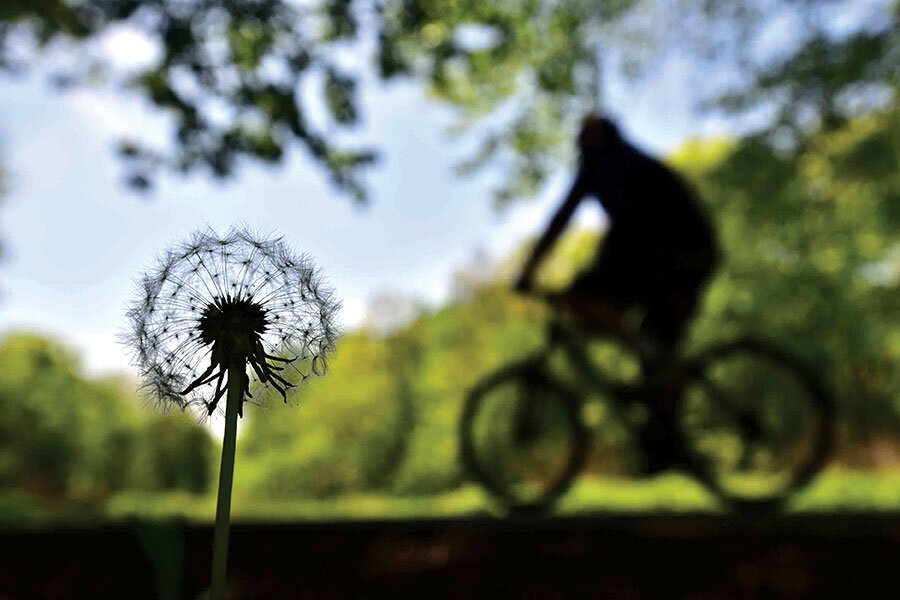Set free on a bicycle
Loading...
No one forgets their first bicycle. Mine was a Schwinn coaster, secondhand, painted a distinctive red and yellow by its previous owner. I remember wobbling dangerously – and too fast – down the big hill on Springfield Avenue amid encouraging outriders: friends who had already learned. I knew at once I was being set free, that the world would be mine to explore.
A couple of years later, when I was 11, my grandmother visited from England, bringing me a bicycle. She came by sea and the bicycle came in a crate with her luggage. It was a glossy dark green, with three gears and hand brakes. As the owner of the first English bicycle my peers had ever seen, I was, for a time, almost a celebrity.
Unlike the coaster bike, it was light and responsive – riding it felt like flying. I rode it everywhere, all over the hilly suburb where we lived. I rode past the big stone houses with their huge yards and established trees. I rode down the streets of small, two-family starter houses and past the brick row houses of the people who worked in the big houses. I rode alone and with gangs of friends through the seasons: spicy autumn dusks, lingering spring afternoons, hot summer mornings, even deep into the chill of winter before snow and ice stopped me.
That beloved bike went with me to college, carrying me to the library and to classes, past the big frame houses of Brattle Street and the shabby triple-deckers of North Cambridge, and into trouble with the local police for ignoring one-way street signs. Beyond transport, it was often a prop: Pushing it along as I walked the college paths made me feel less conspicuous, less self-conscious. Somehow, conversation flowed more easily on either side of a bike.
After college, I lived abroad for a time. Returning from London, I discovered to my horror that my parents had sold my bike. They didn’t even know who had bought it.
For years after that, I didn’t have a bicycle that was specifically mine. Teaching in a New England prep school, I simply rode whatever bikes its graduates had left behind, usually for good reason. I rode around the little town, out to the surrounding fields and woods, on bikes that slipped in and out of gear, with brakes that grabbed or simply failed.
I did not take any of those bikes with me when I moved south to the coastal town where I now live. But after a while I missed riding.
Finally, on a fall day, I bought a bicycle. Called a comfort bike, it has wider tires than my old bike and seven gears. But it is green – a brighter green, but green nonetheless.
Still, I was a bit apprehensive. I was out of the habit and a lot older. I brought the bike home and put on my helmet – I’d never worn a helmet before. Then I got on the bike to ride down to the boardwalk.
After a tentative, slightly wobbly start, I felt exactly as I had that long-ago day on Springfield Avenue: free. Soon I was scudding along, watching the waves break, hearing the gulls cry. The beach roses were still blooming, the monarch butterflies in full jittery flight. It seemed that everyone I passed smiled and waved or called out almost wistfully, “Great day for a bike ride!”
And I knew they all remembered their first bike and how it had set them free. It still can, I wanted to call back to them, it still can.







